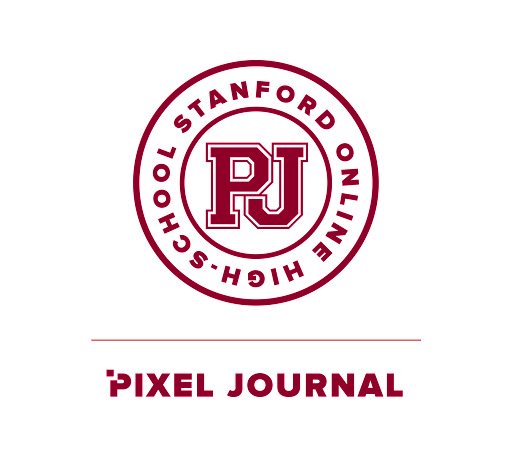Club Spotlight: Science Fair Club
Since 2021, the Science Fair Club has been fostering students’ scientific pursuits, helping them share their passion with the rest of the world. Aanya (’27) and Tanisha (’24) founded the club along with their sponsor, Dr. McKale. As well as promoting collaboration, the Science Fair Club prepares students by keeping tabs on their progress. This is important, as Tanisha expresses, “especially when there are no hard deadlines—this is like a free-flowing project that you can do in your own time—it can be pretty difficult to do two things: one to stay on track, and two to feel like you’re not doing it alone.” Today, the Science Fair Club is a community of student researchers that can actively explore their interests.
The Science Fair Club emphasizes that despite their daunting reputation, science fairs are exceptionally diverse. Projects can range from history papers to AI, and they occasionally closely resemble art projects. The club leaders encourage everyone to join the Science Fair Club, whether it be to keep on schedule for personal research, or to create something new. The Science Fair Club meets on a biweekly basis and activities consist of guest speakers, going through the registration process, brainstorming ideas, getting to know each other, learning through Kahoots, simply having fun, and more. Since being founded in 2020, the Science Fair Club has increased its membership and continued to expand on event and meeting ideas. As a club, they hope to continue to make an impact within the OHS community through inspiring people in science.
The club leaders believe that the most special part about the Science Fair Club is undoubtedly its students. This brings a great variety of ideas and thoughts to the club. Unfortunately, OHS's diverse international student body makes it hard to schedule club meetings at times that everyone can attend. Science fairs are often held in countries which have different deadlines and requirements. Tanisha commented on this, saying that, “Then you have to email the teacher, ping people, call the platform, link up the schools, etc. All of those things would be much easier if we were in person, but I think this experience is still very valuable.” To accommodate its diverse membership, the Science Fair Club checks up on its researchers from around the world by creating personal planning sheets for everyone, consisting of details on their local fair, deadlines, and subsections to help them stay on track.
Currently, there are five students working on submitting diverse projects. For example, last year, Aanya created an environmentally friendly Christmas tree out of potato starch. For Tanisha, an example of her projects include a machine-learning predictor for treating cancer occurence/recurrence subtyping. This year, the Science Fair Club alludes to the true value of participating in science fairs by highlighting Aanya’s struggles in the process. “She has the technical skill that she wants to apply, but she’s not quite sure where to apply it. I think that’s definitely an aspect of learning in science fairs; people have to learn various techniques to try and solve a singular problem that they’ve identified,” explains Tanisha.
For some students who have been involved in Science Fairs since elementary school, their love for them has only grown. Aanya believes they are immensely rewarding. She explains, “I thought I wasn’t going to ever submit, but something came out of it, and that was super memorable.” Tanisha shows the value of the science fairs, even when things do not go as you hoped, by explaining her experiences with previous projects. Her project set out to prove if a chemical in bug repellent would be toxic to humans by testing its impact on the viability of E. coli, which is a predictor of how safe/unsafe a chemical is for human skin. Nevertheless, the E. coli never cultured, which meant Tanisha was unable to complete her project. In the end, she remarks, “I still presented everything I had, and I came out of the fair with an honorable mention. The experience just showed me what science fairs are really about, and that’s learning. The success of a science fair isn’t tied to the specific results you get; it’s not even tied to the success of your project in general. It’s more about what you learned, what you took away from it, and what the experience taught you. And that’s sort of the message I wanted to pass onto people in the Science Fair Club now.”
As the leaders of the Science Fair Club, Aanya and Tanisha share their favorite parts of not only leading the club, but participating in the fairs themselves as well. While making her poster board and writing her abstract, Aanya often comes to the realization that, “I think I’m not doing anything, but when I write it all up, I see that I actually did a lot.” As for the club itself, “It’s about creating activities that help not just myself, but everyone else in the club,” says Aanya. Tanisha enjoys looking at projects, and helping the other students cultivate their research and creativity. For her, two values that stand out are process and community. Her main takeaway is, “Looking at all the work you’ve done, as well as experiences that you’ve had, and recognizing it for what it is. You’ve taken an idea, you’ve given it your all, and you’ve come out with something that is finished. You’ve accomplished something, and it’s the greatest feeling to know that you’ve done anything about something that you care about.”
The Science Fair Club is a great place to start for student researchers looking to explore their interests. If you are interested in a diverse environment that helps students present their ideas, make sure to check out the Science Fair Club!
